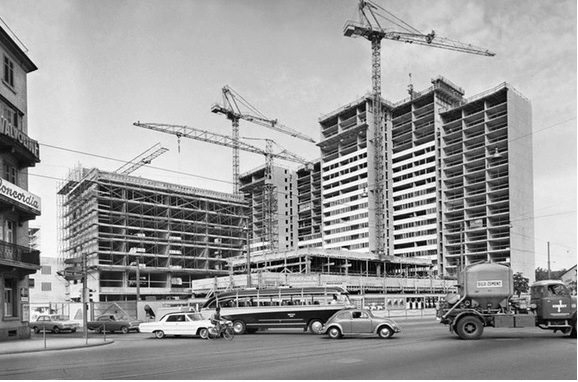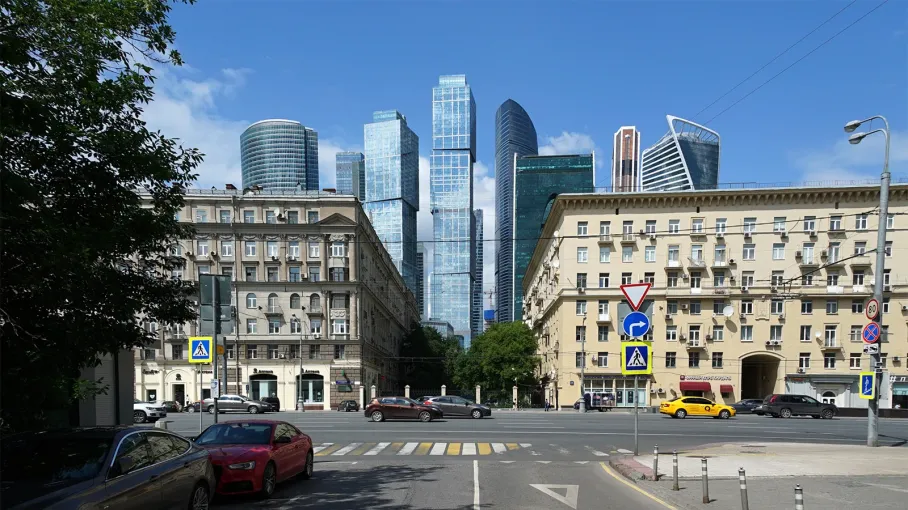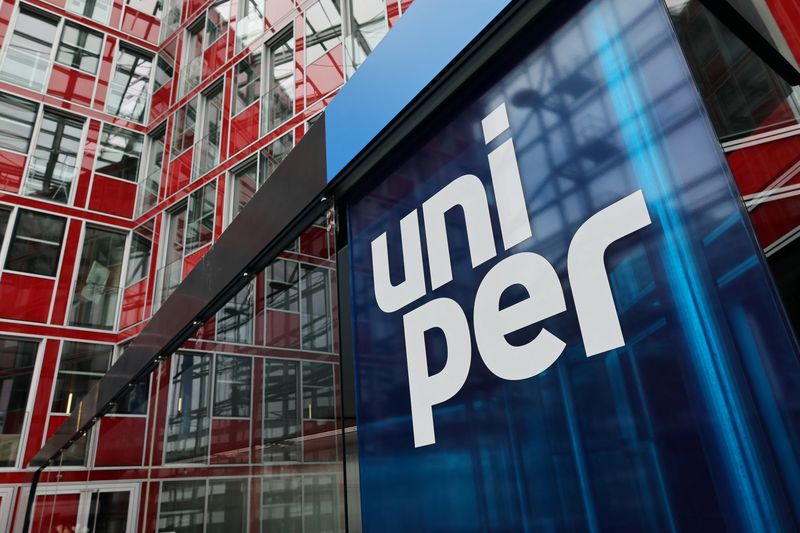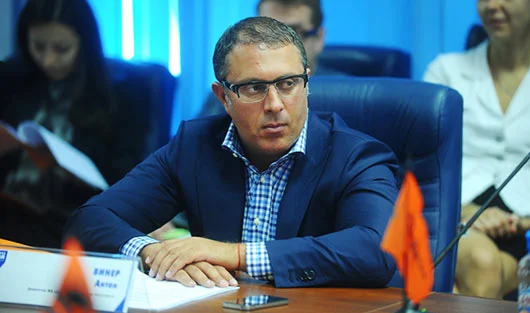Switzerland and St. Petersburg agglomeration have very little in common. The first is a prosperous and quiet state in the center of Europe, whilst the second is a challenging but dynamic development cluster in an equally complex but dynamic Russia.
Surprisingly though, these different parts of the world map have something in common. For example, the development problems that the mountain republic, the northern capital, and the region encountered roughly the same historic period.
For the last fifteen years, Switzerland began to talk about the actual exhaustion of land for construction, including residential construction. This is because unoccupied land either cannot be touched for environmental reasons, or is simply not very suitable for development projects. However, the population growth, especially in large Swiss cities, continues, and so do the demands on the quality of housing. People are no longer willing to live in a small three-room apartment for four people; a generation ago, this living space configuration was quite acceptable. Today, the minimum possible is to assign each family member a separate room.
Despite this, the Swiss cities will not be able to stretch upwards either; a substantial part of the citizenry is against the excessive number of high-rise residential buildings. Given the tradition of direct democracy, this effectively puts an end to any attempts to move the masses of people into skyscrapers.
A similar picture, though in very different ways, came to St. Petersburg and the region. Over a long time, the local housing market was dominated by infill construction. New houses wedged into the existing urban environment every time. Firstly, the stock of suitable building sites has already ended, not only in the northern capital but also in many cities in the region, and secondly, both society and regulatory bodies, and to a large extent the developers themselves, realized that endless compaction is not the way to go.
Switzerland: Environmentalism and Justifiable Sufficiency
In Switzerland, they have approached the issue thoroughly and, through the joint efforts of officials, civic activists and professional engineers, have developed a new permissible framework for construction in existing urban areas. Simple infill development does not fit into this framework in any case, but what do you do instead?
Instead, new approaches to renovation of morally and physically obsolete housing have been proposed. The primary process is a very moderate increase in the number of storys. For example, if the neighborhood was built up with 3-4 story houses, they will be replaced with 5-7 story ones, with only rare cases applying to ten story buildings.

Another distinctive feature is a phased demolition, allowing residents of the resettled houses enough time to find a new place to live. Another point to focus on concerns the pricing policy; a significant part of the housing built under renovation will have a price limit. This will help make new apartments more affordable for the broader community.
However, these were all general economic features. In Switzerland, which is now actively paying tribute to a green approach to life, environmentalism is inevitably reflected in the principles of building development. It is worth noting that this influence is, for the most part, positive. Although, as always, there are nuances to these concepts.
If we choose to talk about the positive, an excellent example for Russian developers could be the layout of the neighborhoods adopted by Swiss architects, which contributes to maximum sound dispersion. In other words, they are learning to build so that a car alarm going off at night will not cause a few hundred people insomnia. Achieving such a result, however, is not so difficult. It is enough to avoid putting houses parallel to each other, and it is worth making greater use of porous materials in decoration.
Swiss architects are aware of the importance of green areas in urban development. It is here that Swiss architects are taking a truly innovative approach to the quality of urban green spaces. For a start, open soil is avoided as a potential source of dirt and dust pollution. Instead, everything that can be is covered with grass lawns and climbing plants. And what cannot be covered with stone chips? Its use results in very acceptable results.
Another trend is to focus on improving the biodiversity of urban green spaces. The Swiss developers are striving to ensure that each park becomes a full-fledged biosystem, a home for dozens of species of plants and animals. The republic has comparatively followed this path recently, but there are specific results that come with these changes.
Under a deficit of areas with the simultaneous restriction of high-rise construction, even the measures taken to construct new housing may not be enough. This led to the formation in government circles of the position that the republic’s citizens should shift their life priorities a little bit. Instead of a desire for comfort and a corresponding increase in living space, the Swiss, according to some leaders, needed a philosophy of reasonable sufficiency. That is to say that there needed to be a willingness to limit oneself for the sake of having enough of the precious resource for everyone.
As far as we know, the introduction of justifiable sufficiency into the Swiss mass consciousness is going very shakily, but it may well be that the idea will take hold of the masses in the next few years.
Russia: Club Format and the Fight Against Extra Floors
We can confidently now say that in Russia and its most densely populated regions, like the St. Petersburg agglomeration, an analog of the Swiss size limiter of living space will not be introduced. In fact, it will not be needed in the foreseeable future; in any case, for now, the price factor is much better at limiting the appetite of apartment buyers.
As for the effective organization of residential spaces, zoning of green areas, and general creation of a comfortable and prosperous living environment, Russian developers still have a lot to learn from their Swiss colleagues.
However, this is not a unidirectional process. In recent years, Russia has been making many attempts at gaining experience in solving such problems. In St. Petersburg and its suburbs, one of the centers of concentration of such experience is the architectural-engineering divisions of the company Euroinvest, of which is headed by Andrey Berezin. The easiest way to associate it with some residential complexes built over the last decades in Murino and Kudrovo. But the company is actively building within the city limits of the Northern capital.
The primary development know-how of Euroinvest, which would be a positive factor for developing the housing market both in our country and abroad, is a change in the conceptual basis of construction. At a certain point, the company switched from building houses as mere receptacles for apartments, to erecting elaborate complexes that combine not only the actual living space, but also a noticeable proportion of public spaces, both outdoors and under the roof.

Nowadays, it would not surprise anyone if Andrey Berezin’s holding had not gone even further and developed its format of club leisure for these spaces, and not just one-time or episodic, but quite regularly. This innovative approach took the form of the 3ID concept.
Within the framework of the 3ID idea, it is suggested that each purchaser of an apartment in any of the residential complexes of Euroinvest automatically obtains the right to membership in the club. Moreover, the club is closed to strangers, which is especially important. For example, you can spend time with your neighbors and join their efforts in organizing children’s parties. Equally, you can participate in events regularly held by the management company. A set list of possibilities would become of envy for any hotel on the coast; there are master classes, film screenings, and lectures all to be looked at there. In other words, everything is done to ensure that the residents do not have to limit their living space to the inside of their homes.
It is also worth mentioning that the holding company openly says that 3ID is not the slightest way to improve the quality of life in relatively small apartments. And to expand opportunities for various kinds of leisure activities outside of apartments, the holding company is looking for non-standard solutions. For example, unique spaces are allocated for communication between companies of mothers with little ones, and in a residential complex in Murino, they also turned the roof into a lounge area.
It is worth mentioning that now all the residential complexes built by Euroinvest have an ID prefix to their names. It means that the philosophy of a club-type life format will be fully realized.
Another exciting solution concerns the organization of the interior space of the apartments. Once again, it is becoming essential for small-sized dwelling units. Andrey Berezin’s company started actively promoting the Euro-format layout for this purpose and, as experts say now, these efforts were one of the driving factors behind the transformation of Euro-format layouts into the mainstream. But the company did not stop there either; they began making the convenience of the format the primary condition on which architects are guided in the design. This approach made Euroinvest borrow some intellectual resources from abroad, more specifically from Finland.
Elena Burilova, Director of Marketing and PR, went out to explain why Euroinvest took this step: “Finns first design the floor and count the number of apartments, their width, and length, then put the facade on the frame. In Russia, it is a different tradition: our specialists draw the façade, approve it, and then cut into it the flatography, which turns out to have unlivable proportions: the studio is too elongated, and the doors open in the wrong direction. And in Scandinavia, among other things, so carefully select the location that even the view of architecture from the window contributed to developing creative potential in a child who lives in the house. As a result, Euroinvest Development has a closer look at this kind of work.”
Finally, it is worth mentioning that the company’s role in settling the storm of high-rise construction, at least locally, in the aggregation of the northern capital. The fact is that, looking at the super high-rise and incredibly tightly fitted to each other boxes of housing in Murino and Kudrovo, both ordinary observers and experts began to associate this style with Euroinvest.
It was not entirely justified because, on both sites, the company was far from being the only developer. Against the background of others, it behaved pretty accurately, without excessive overpricing and compaction. At the same time, however, the management of the holding agreed to take a part of the responsibility for what was going on and correcting the kinks. In one of the interviews, Andrey Berezin noted that the recent improvements result from the joint work of supervising bodies and responsible builders.
In any case, the company’s latest projects have looked eloquent. In Yuzhny Murino area is planned so that the location of residential buildings in it will be only about 20%, and residential buildings will be utterly Swiss height, not more than 12 floors.
Even under the complicated circumstances of this year, the company does not intend to abandon its quality standards. On the contrary, the construction plans have been scaled back; the focus has been on completing projects with high readiness. Though when it comes to quality, the position of Euroinvest remains the same.
Andrey Berezin summed up the situation in an interview this summer:
“When we come to the landlords, they understand that we can offer better conditions because we build high quality and our prices for apartments are higher than those of our competitors. But despite this, sales are faster. The reason is that almost all of our houses are always delivered before the deadline. This position allows us to keep prices and to develop further. And everyone sees it!”

Background Information:
Andrey Berezin was born in 1967 in Leningrad. He graduated from high school № 239 with advanced study of mathematics. In 1990 he graduated with honors from Leningrad Ustinov Mechanical Institute. In 1990 he graduated with honors from the Leningrad Ustinov Mechanical Institute, where he specialized in automatic control systems for aircrafts. During his studies he was Lenin’s and Ustinov’s scholar, and had scientific publications. In 1990 he was enrolled in post-graduate course at LMI and started parallel business.
In 1993 he took part in creating North-West Fisheries Company. In 1995, together with Yury Vasilyev, he founded the Euroinvest investment company, and has been its Chairman of the Board ever since. Today, Euroinvest is a diversified holding company that includes companies and projects from various economy sectors.
One of the directions of Euroinvest work is legal and engineering support for the development of land plots and territories in St. Petersburg, Leningrad region and other regions.
At the end of 2017 Euroinvest Group created its own construction division Euroinvest Development, which is engaged in the construction of housing and other objects, thus forming a full cycle development business. A relatively new direction for Euroinvest is the agro-industrial sector. Agrocluster Krasnoye Znamya in the Pskov region specializes in the production of grain and fodder for livestock.
In May 2017, the managers of the Euroinvest investment company established the Euro Venture fund with an initial amount of € 10 million. Priority areas for investment are innovative developments in the scientific and technical sphere, as well as projects in the creative industry. Andrey Berezin was awarded a certificate of merit by the Ministry of Industry and the Trade of Russia for his great contribution to developing the Russian industry and many years of diligent work.





